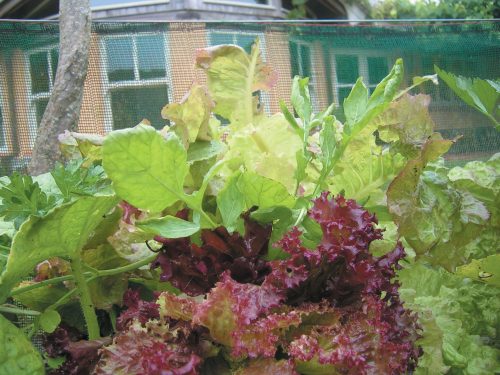
Trish Allen with a guide to growing your own salad greens.
Salad greens would have to be one of the most satisfying vegetable crops to grow. There's nothing quite like freshly picked salad, straight from the garden onto the table, with all the vitamins, minerals and nturients intact.
You don't need much space to grow salad greens. A kitchen garden is great if you have one, but salad greens also grow well in pots or planter boxes on a deck or terrace, or even on a windowsill. Growing greens in containers can look so attractive, you might find yourself reluctant to pick them!
How to grow
I like to grow salad greens in plucking or cutting beds, so you get a continuous supply. A good mix of greens are ideal for plucking beds – mixed lettuces (non-hearting varieties), rocket, parsley, chives or mesclun mix, which is a mixture of tender baby lettuces, greens and herbs.
Sow seeds directly onto a good quality seed raising mix (organic recommended), tamped down, damp but not wet. Cover with a sprinkling of seed raising mix – not too much – fine seed should be barely covered. As a general rule, seed should be sown no deeper than twice its diameter. Water carefully and evenly during germination and make sure soil does not dry out or get
waterlogged.
Harvesting
Once the plants reach about 15cm, they can be harvested by cutting or plucking just above the growing point. Within a week or so they will grow back and can be harvested again.
Salad greens can be grown outside all year round in warmer climates. Even in cooler climates, salad greens will grow outside most of the year in sunny sheltered micro-climates. Or grow them indoors in a conservatory or greenhouse. Avoid full sun in the hot summer months, as lettuces will become hard and shoot to seed. Semi-shade is best.
Nutritional tips
- Lettuces and other leafy green vegetables are a source of B-carotene, thiamine, riboflavin, niacin and vitamin B6.
- B-carotene is an antioxidant and also stimulates the immune system.
www.healthyfood.com










